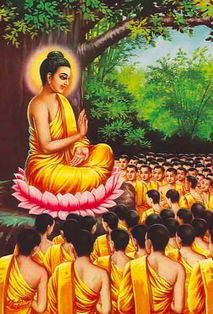|
There is no place to seek the mind; It is like the footprints of the birds in the sky. --- Zenrin Every contemplative tradition has what might be called "objectless" meditation emphasizing the characteristics of awareness. As simple as it may seem, it can be challenging for most, so here's an incremental practice to create the qualities of stability, reflectivity and resilient equanimity needed for such "objectless" meditation.
5 Comments
 The Buddha’s teaching on anatman or “not self” and shunyata (emptiness) are perplexing for many people when they first are presented with it. And yet, it’s not only what physics, chemistry, psychology and all the other sciences tell us; it's also what the evidence right before our eyes if we actually look without the veils of assumptions, expectations and pre-conceptions tells us: there is no-‘thing’-ness to any phenomena.  In my first posting on this most popular discourse, I explored the criteria the buddha suggests we use to arrive at knowledge of what is true and helpful, leading to greater freedom and joy. The discourse continues with the buddha asking the Kalamas to apply his suggested criteria to the “three poisons,” also known as the “four roots of suffering.”  “The Discourse to the Kalamas,” most popularly known as “The Kalama Sutta,” has been called “The buddha’s charter of free inquiry” and “The buddha’s manifesto for critical thinking” and is justly famous – and often repeated in contemporary, western buddhist circles – for its encouragement of free inquiry but is often misrepresented by contemporary practitioners. |
AuthorPoepsa Frank Jude Boccio is a yoga teacher and zen buddhist dharma teacher living in Tucson, AZ. Categories |



 RSS Feed
RSS Feed